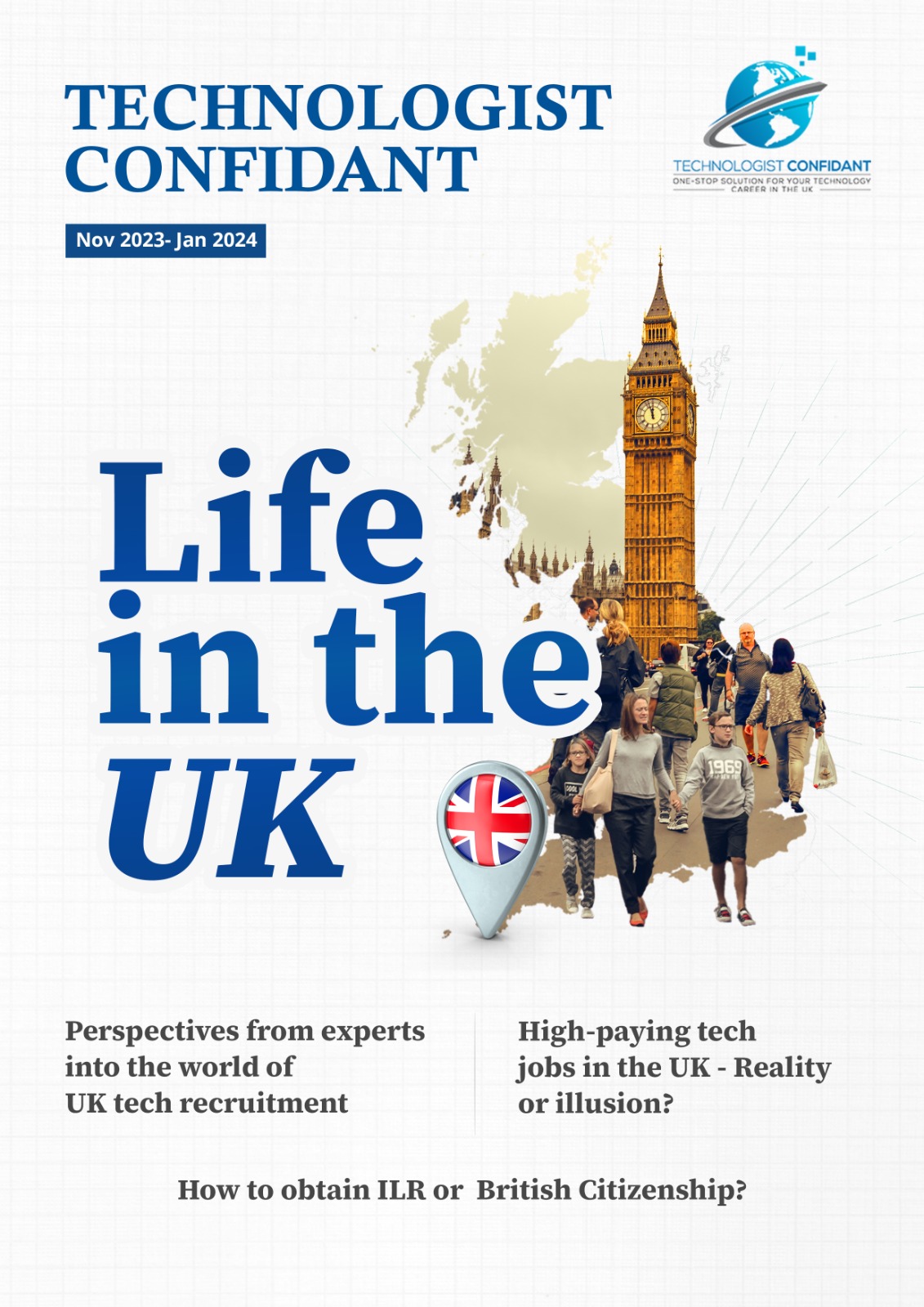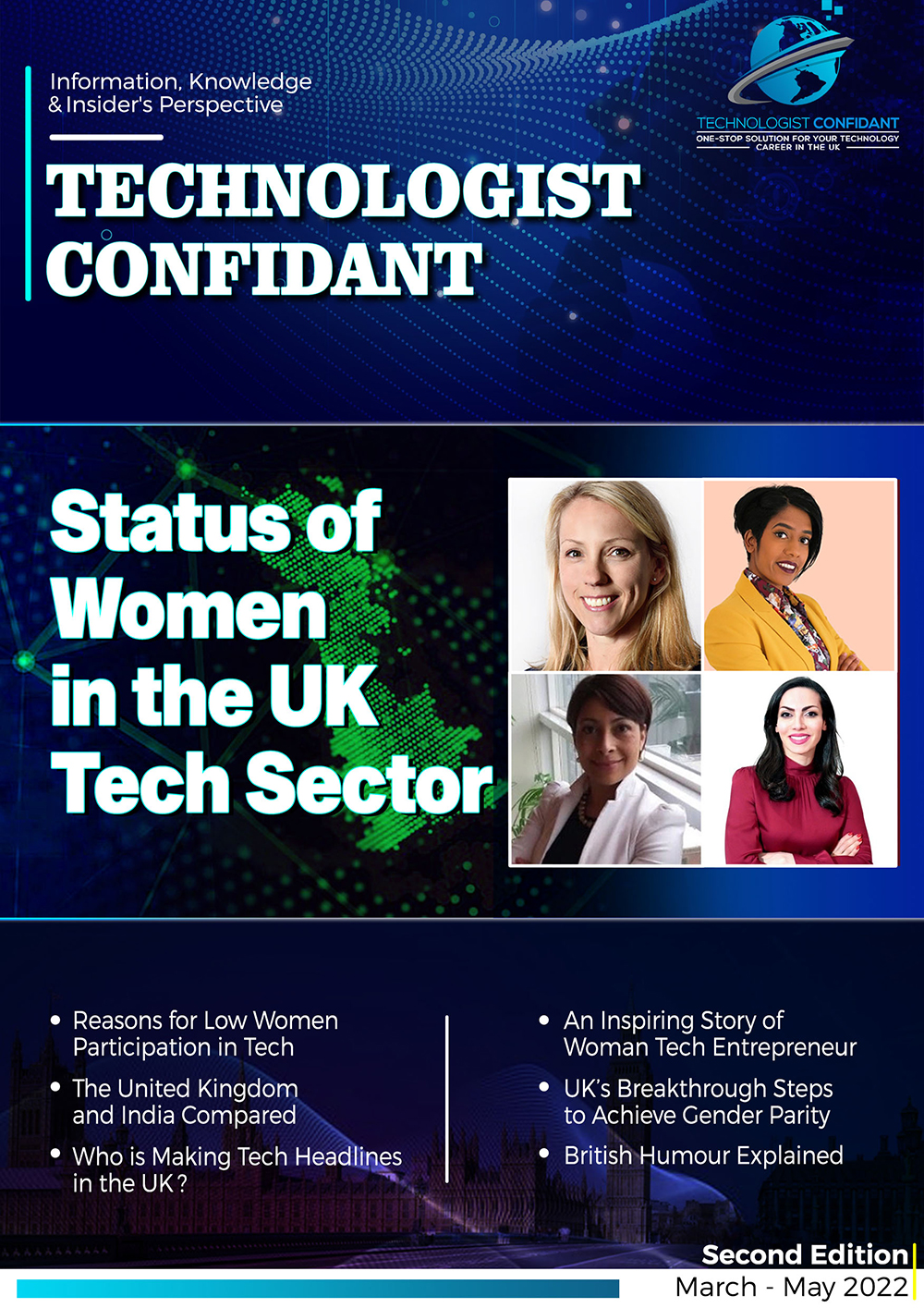The tech sector in the United Kingdom has a robust startup environment, a thriving investment community, a large pool of UK and international talents and a persistent spirit of innovation. The UK tech sector has delivered more than it promised, from growing tenfold in 10 years to revolutionising the economy. Moreover, it is making headlines in the international market despite BREXIT and COVID-19.
The UK now ranks third globally for innovation, disruption and technology and is committed to leading the global technology innovation and breakthroughs. However, to attain the global leadership position in tech, the UK must address the areas holding it back. Firstly, the widening digital skills gap across the UK. The UK tech job market currently faces a shortfall of over 100,000 skilled specialists: most acute around developers (45%), cybersecurity (42%), big data and analytics (36%), and technical architecture (33%). Secondly, gender disparity, women are underrepresented in tech, especially leadership roles. PwC's Women in Tech report states that only 5% of leadership positions are held by women, with a minuscule 3% of women choosing a career in technology as their first choice.
The unprecedented shortage of technical talents is jeopardising the advancement of the UK tech sector, and one of the reasons is the less participation of women. Hence, the need for the UK to address gender disparity is more significant than ever. This article discusses the status of women in technology in the United Kingdom.
Gender disparity in the UK tech sector:
Gender disparity or the underrepresentation of women than men have a long-documented history not only in the UK’s tech sector but also global tech industry. For example, only 26% of the UK's total tech workforce are women. Despite increasing female interest in the technology sector, gender diversity remains a critical problem to address. So, what are the main reasons?
Gender stereotypes and Job Segregation
Gender stereotypes are deeply rooted in our cultures and influence every choice we make, whether it is education, job or family life. It starts from early life where children are treated based on their gender; for example, boys are encouraged to enrol in STEM subjects because they are thought to be good at math and girls are considered good at humanity. Similarly, men are expected to earn money and play the family breadwinner role in many families. In contrast, women are treated as complementary earners and expected to perform home and family caring responsibilities as a primary role. Women play a more significant role in caring for children and sick or elderly relatives alongside household tasks. Therefore women prefer low-demanding jobs over high-demanding technology jobs as it is easy to combine with family responsibilities.
Bro-culture in tech
Seventy-two per cent of women in technology have worked in an environment where bro culture is prevalent. Men in business meetings regularly outnumber the majority (72%) of women in tech by at least a 2:1 ratio. 26% of women are outnumbered by 5:1 or more (TrustRadius, 2021).
Lack of women role models
Women in IT face further hurdles due to a lack of representation. It restricts their access to mentorship and sponsorship and encourages unconscious gender bias in the workplace. Many women are left with no clear path ahead; as a result, they are discouraged from starting a career in tech or even starting a business.
Organisational policies and practices
Organisational policies and practices help in creating and maintaining inequalities in organisations. Hiring and salary practices within the IT industry favour men. For example, the industry uses a lot of alpha male languages in job advertisements, which discourages women from even applying for jobs. Furthermore, the hiring practices that include a small number of women candidates increases men's chance to be hired.
Lack of affordable childcare facilities and decent paying part-time jobs
The UK has exceptionally high childcare costs because childcare services are only supplied through the private market and which is the highest motherhood penalty in the UK. To give an example, per year 54,000 women leave the labour market after entering motherhood.
What are the UK govt, NGOs, and Employers doing to reduce gender disparity?
The UK government's Gender Equality Roadmap is set out to work against this backdrop and enable the UK tech sector to thrive. On the other hand, technology organisations highlight the roadblocks women face in the tech sector. The UK tech leaders are now challenging stereotypes, promoting skill development through mentorships and training and advocating for women representation in businesses. Moreover, the UK’s national bodies and NGOs are fighting for deep-rooted gender disparity, for example:
The Equality and Human Rights Commission (EHRC) is the national equality organisation of the United Kingdom and it enforces equality legislation on protected characteristics such as "age, disability, gender reassignment, marriage and civil partnership, pregnancy and maternity, race, religion or belief, sex, and sexual orientation". Where appropriate, they investigate systemic concerns, gather evidence, and propose potential remedies—using their legal expertise, research, insight, and analysis to impact public policy and enlighten debates.
Non-governmental organisations (NGOs) such as the Fawcett Society advocate for gender equality and women's rights at work, at home, and in mainstream society. Their nationwide efforts impact the conversation and propel change. During Covide-19, they ran Fight for Equal Pay, Secure Equal Power, Challenge Attitude and Change Minds, and Defend Women's Rights.
The Equality Trust is a registered charity dedicated to improving the quality of life in the United Kingdom through reducing economic and social inequality. They campaign for policy changes that will substantially influence reducing disparities, and they advocate for a variety of measures that will reduce inequalities at the national, regional, and micro-level.
Overall, the United Kingdom ranks 23, the United States ranks 30, China ranks 107, and India ranks 140 in the World Economic Forum's Global Gender Gap Index 2021 rankings. Gender inequality is widespread worldwide, and we hope that these articles will serve as a wake-up call to leaders to make gender equality a top priority to improve our economy and society.






